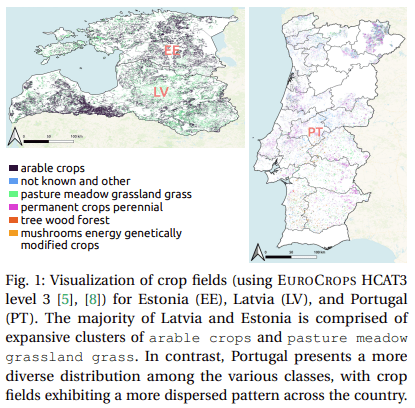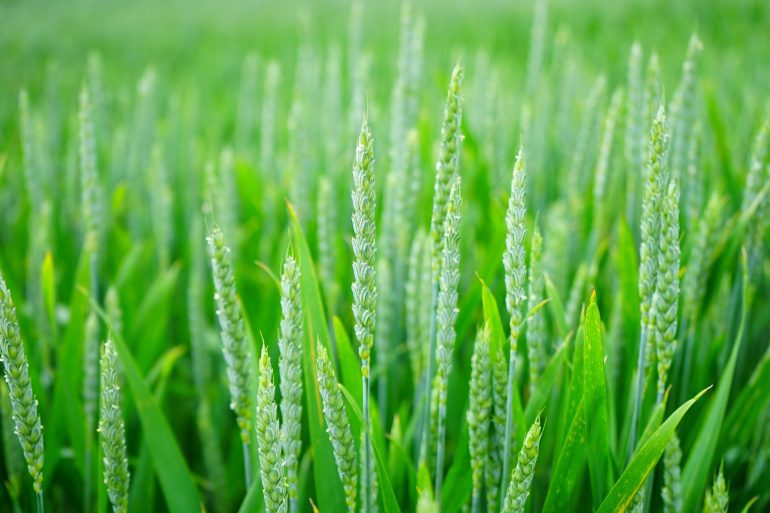- Remote sensing technologies are crucial for environmental monitoring and agricultural management.
- Accurate crop classification is vital for food security and sustainable agricultural practices.
- Traditional datasets often lack geographic coverage, crop variety, and sufficient labeled data.
- Existing datasets like ZUERICROP and CROP HARVEST have limitations in scope and data labeling.
- EUROCROPSML, developed by researchers from prominent institutions, includes 706,683 agricultural parcels across 176 crop types.
- The dataset features pre-processed Sentinel-2 satellite imagery from 2021 with detailed spectral band information.
- Initial experiments show significant performance improvements in machine learning models using EUROCROPSML.
- Transfer learning with diverse data enhances model accuracy, with notable gains observed in accuracy rates.
Main AI News:
Remote sensing technologies, employing satellite and aerial sensors, are pivotal for environmental oversight, agricultural management, and natural resource conservation. These technologies gather extensive data over vast regions and times, which is crucial for informed decision-making. Monitoring agricultural crop distribution is vital for food security, a key Sustainable Development Goal. With five billion hectares of agricultural land globally, precise crop type classification is essential for optimizing farming practices and ensuring food production aligns with population growth.
A primary challenge in agricultural remote sensing is the accurate classification of crop types across diverse regions. Traditional datasets often fall short due to limited geographic coverage, a narrow range of crop types, and insufficient labeled data for training machine learning models. These constraints impede effective benchmarking of algorithms, particularly those using few-shot learning techniques that perform well with minimal examples. Hence, there is a pressing need for extensive datasets that encompass varied geographic areas and crop types, enabling improved algorithm development and research comparability.
Existing datasets like ZUERICROP for northern Switzerland, BREIZHCROPS for Brittany, and CROP HARVEST, which provides binary crop-vs.-non-crop labels, are restricted in scope. For example, CROP HARVEST’s data from 116,000 parcels globally is limited by a small fraction of multi-class labels, reducing its effectiveness for sophisticated classification models.
To address these gaps, researchers from the Technical University of Munich, dida Datenschmiede GmbH, ETH Zürich, and Zuse Institute Berlin have developed the EUROCROPSML dataset. This dataset features 706,683 European agricultural parcels across 176 crop types. It supports machine learning advancements by offering a comprehensive, multi-class labeled resource ideal for few-shot learning, promoting robust model development for diverse regional conditions.
The EUROCROPSML dataset includes annual time series data from Sentinel-2 satellite imagery for 2021, with pre-processed median pixel values to eliminate cloud cover and noise. Each entry comprises a time series of median values across 13 spectral bands, detailing light reflection at various wavelengths. Essential metadata, including crop type labels and spatial coordinates, is also provided to enhance model training and evaluation.
Initial experiments with EUROCROPSML show substantial performance gains. Models trained on Latvian data achieved an accuracy of 0.66 in a 500-shot learning scenario, significantly outperforming those without pre-training, which only reached an accuracy of 0.28. Incorporating Portuguese data further improved accuracy, underscoring the importance of diverse training data in enhancing model performance.

Source: Marktechpost Media Inc.
Conclusion:
The introduction of the EUROCROPSML dataset represents a significant advancement in agricultural remote sensing. By providing a comprehensive and diverse dataset, it addresses key limitations of existing datasets, enhancing the ability to develop and benchmark machine learning models for accurate crop classification. This improved capability is crucial for optimizing agricultural practices and supporting food security goals. The dataset’s extensive coverage and detailed information are likely to drive innovation in machine learning applications and contribute to more precise agricultural monitoring and management strategies.

